The tunnel speaks with spectroscopy. Chema with Pitarke
This young physicist, born in Begoña (Bilbao) in the year 960, has received the prize corresponding to the research section Azkue Sariak for his work in his doctoral thesis. The delivery of the Azkue Prize has allowed us to collect his opinion and be prologated of research in the field of Physics.
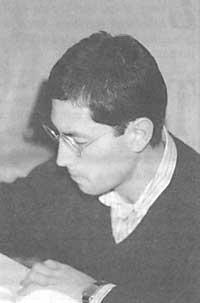
This young physicist, born in Begoña de Bilbao in 1960, has received the prize corresponding to the research section of Azkue Sariak (together with Andoni Sarriegi) for his work in his doctoral thesis. This thesis is entitled "The spectroscopy of tunnels and the emission of electrons and photons in solids", and has already given in high-level scientific journals a theme for several articles, comfortably overcoming quality control. The delivery of the Azkue Prize has allowed us to collect his opinion and be prologated of research in the field of Physics. He works in the Department of Theoretical Physics of the Faculty of Sciences of Leioa, where we have taken the time to conduct this interview.
José Ramón Etxebarria.- Why did he start in the world of physics?
Txema Pitarke.- When I was in high school I liked the subjects of Mathematics and Science and wanted to learn Mathematics or Physics. Someone told me it was better to learn Physics than Mathematics and I decided to learn Physics.
J.R.E.- Did you study at the Faculty of Sciences in Bilbao and then why did you start working in teaching?
T.P.- When I finished the race, one of the possibilities was to enter the teaching. By then he already had experience in the field of teaching and wanted to investigate. The university was the ideal place for both.
J.R.E.- As for teaching, he began teaching in Basque on the Basque line.
T.P.- Previously he had worked at BBB giving mathematics classes in Basque, in an ikastola.
J.R.E.- What were the first research papers?
T.P.- First I did the test. Theoretical study of the local electrical zone. Then, when making the thesis, I totally changed the subject.
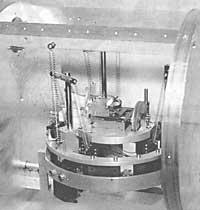
J.R.E.- Why theoretical things?
T.P.- I have always had a tendency to do theoretical things. I also liked to go to the laboratories, but I had more desire to walk in theoretical things.
J.R.E.- Then, after doing the thesis, the thesis began. How many years ago with the thesis?
T.P.- I started Tesina in 1984 (when I finished the race in 82 and left the BUP classes), ended in 1985 and started with the thesis in 86.
J.R.E.- With whom did you start?
T.P.- Etxenike.
J.R.E.- Why did you go to San Sebastián in search of the thesis director?
T.P.- That same year I learned that Etxenike was a newcomer to Cambridge, and I think it was the best of the possibilities here to make theoretical questions, and I chose it.
J.R.E.- Then you contacted him.
T.P.- Yes, I realized that he was thinking of forming a team here through Fernando Plazaola. Etxenike wanted people to work with him and I decided to go to him to know what could be done with him.
J.R.E.- You took it well.
T.P.- Yes. After knowing the research work I had in his hands, I spent a season thinking if I wanted that, and decided to work with him.
J.R.E.- The distance did not put objections to this, that is, the passage from Bilbao to Donostia?
T.P.- No. He has brought ideas and has been enough to have time to discuss from time to time to get the work going.
J.R.E.- Let's go ahead with the thesis. As you can see, this dense thesis consists of two distinct parts. Would you explain what parts they are?
T.P.- Yes, the thesis consists of two main sections. On the one hand, taking advantage of the tunnel microscope, we have used the experimental results obtained by other researchers to perform a theoretical analysis of both the surface potential and the potential of banal interaction, as well as the effects of surface geometry. On the other hand, several areas related to the interaction of fast ions with electrons that form matter have been analyzed.
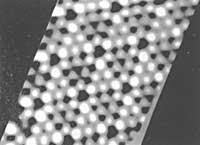
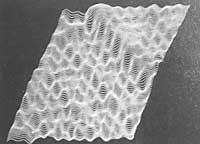
J.R.E.- Let's start with the first chapter. Tunnel microscope. What is that? For what?
T.P.- The tunnel microscope was first designed in 1981 by Swiss researchers Binnig and Rohrer, who were awarded the Nobel Prize in 1986. Controlling the current of tunnels through the vacuum between two metals, they managed to see in high definition the positions of the atoms of the surfaces. The idea is very simple: Quantum Mechanics predicts that the installation of a puntiform metal at a distance of several angstromas from the surface object of study and the generation of a non-null potential difference between both surfaces, allows the most cutting-edge electrons to cross a barrier of zero potential, generating a current of tunnels. It is also known that by increasing the distance between the two surfaces, the current of the tunnel decreases exponentially. Consequently, by circulating the thin metal tip through the surface that is intended to be studied without touching the sample, the vertical displacements that the tip will suffer will provide us with a real image of the surface at atomic level, keeping constant the current of the tunnel, keeping constant the distance between the sample and the tip.
J.R.E.- It can be said, therefore, that the tip moves from atoms approximately.
T.P.- Yes, every time the distance of the tunnel suffers an increase of an angstrom, the current of the tunnel decreases approximately ten times
J.R.E.- What surprises me most about this is to mechanically control the movement of an Á. How do you get it?
T.P.- Since Robert Oppenheimer and George Gamow released the mechanical-quantum tunnel effect in 1928, that is, two years after the publication of Quantum Mechanics, the experimental current has been collected through the vacuum of controlled tunnels. However, no successful results have been obtained until, mainly due to vibration problems, Binnig and Rohrer, in 1981, managed to build the tip by eliminating vibrations with a resolution of several hundredths of angstroms using a triptych of piezoelectric material.
J.R.E.- How to control it mechanically? Can you build a motor with such a fine movement?
T.P.- The tip is a feedback mechanism that measures the current of the tunnel and keeps the distance between the two surfaces constant. The tip moves vertically. Therefore, the atomic structure of the sample surface.
J.R.E.- In short, a laun piece is prepared for the study of its surface and a kind of scan is performed at its height according to the two directions coordinates of the horizontal plane.
T.P.- Yes. The tip located on the surface of the sample at a distance of several angstromas moves through parallel lines. In this way a three-dimensional image of the surface can be obtained once the movement of the tip is processed by a computer.
J.R.E.- And how is this famous tip? Will it have to be very small, no?
T.P.- The finer, the higher the resolution of the zones. In fact, the repeated realization of experiments that give rise to violent electric fields between the sample and the tip sharpens the tip, and allows only electrons corresponding to a single atom corresponding to the end of the tip to participate in the current of the tunnel.
J.R.E.- What material is used for this?
T.P.- Tungsten tips are normally used.
J.R.E.- Therefore, what can be done with this technique is to know the surface.
T.P.- The immediate application of the tunnel microscope allows to obtain topographic images of the surfaces. It has also been shown to be very useful for measuring the residual potential barrier found by surface electrons and for knowing the mechanical-quantum interactions between tunnel electrons and surfaces, and this is what we do, taking advantage of the experimental results obtained by other researchers.
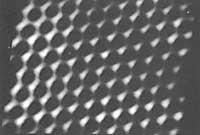
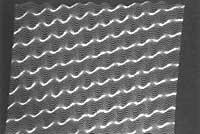
J.R.E.- This method, for the moment, can be very interesting to know the structure of matter, but is there the problem, only on a theoretical level, or from there you think of making some application, not only in Theoretical Physics, Applied Physics and Technology?
T.P.- The tunnel microscope has already been used in Biology to publicize the structure of DNA and several experiments with viruses and proteins have been carried out.
J.R.E.- The surface should not be metal?
T.P.- The original tunnel microscope (STM) has been used for the observation of biomolecules, located on a conductive surface, but in recent years new microscopes have been designed that can study non-conductive surfaces, such as the atomic force microscope (AFM) and the photon tunnel microscope (PSTM).
J.R.E.- Let's go to the second part of the thesis. Have you done something similar?
T.P.- In the second section of the thesis several aspects related to ion-matter interaction have been analyzed. On the one hand, the process by which the collision electrons are emitted by the interaction between the pairs of fast ions and the electron gas has been studied, and on the other hand the process of capturing electrons by emission of radiation through the channel ring through the solids has been studied.
J.R.E.- And what interest do you have?
T.P.- The fundamental objective is to analyze the behavior of particles that constitute matter. For this, over the years there has been the interaction of matter with different types of charged particles, and the need to be able to interpret such experiments has forced to analyze the interactions between charged particles and matter. In 1911 Rutherford used the particles to know the structure of the atom and Bohr published his first papers analyzing the interactions of charged particles that traverse matter.
J.R.E.- For example, we set an example. Let's give a particle, an ion. What will normally come out?
T.P.- Projected ions can be accompanied by electrons or photons, among others.
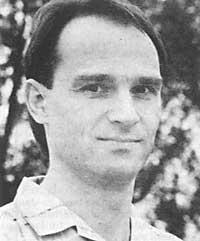
J.R.E.- But has nothing to do with radioactivity? Or is it radioactive radiation?
T.P.- No, because the energies of the photons that can be extracted in the processes we study are of several keV.
J.R.E.- It is therefore something mechanical, a kind of shock. I mean, there is no nuclear reaction. Have you not analyzed this?
T.P.- No. In the experiments we usually analyze, the interactions between the poured charges and the electrons that form matter predominate, as well as the interactions between the electrons themselves, results that can inform us of the processes in which the electrons participate.
J.R.E.- Therefore, the energies will be lower than those that appear in the nuclear reactions.
T.P.- Yes, of course. Although the projectiles launched in these experiments are faster than the electrons that form matter (the speed of Fermi is usually about a hundred times lower than that of light), the speed of the projectiles is approximately ten times lower than that of light.
J.R.E.- He mentioned some experiments. Do your groups or do some Euskal Herria groups from here or who?
T.P.- No, these experiments are performed in laboratories worldwide.
J.R.E.- Therefore, your group, which you are in Donostia and Bilbao, is theoretical.
T.P.- Yes.
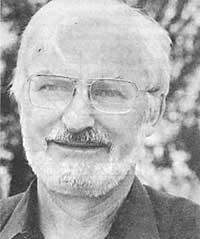
J.R.E.- But you will have contact with experimental groups. Where are these groups from? Have you had any personal relationships or only through scientific journals?
T.P.- Etxenike has relationships with many experimental groups, in the United States, Japan, Germany… I have also had relationships.
J.R.E.- Where?, for example...
T.P.- In the third section of the thesis, for example, it is dedicated to the realization of a theoretical study of the processes with which a Japanese can account for the experiment carried out in the laboratory of American Argonne, with which I am.
J.R.E.- What is this scientist called?
T.P.- Yamazaki.
J.R.E.- What do these experimental physicists say? Do you agree with your theoretical explanations?
T.P.- Yamazaki, for example, is waiting for the explanation of his experiment and our explanation is approaching, but we still have to work more. In the fourth section of the thesis, on the other hand, the energy deficit of the radiation that have studied the rapid ions through the solids in the channel ring in Oak Ridge has been interpreted.
J.R.E.- You mentioned Oak Ridge and Cambridge before. Is the local Cavendish laboratory theoretical?
T.P.- In the Cavendish laboratory there is everything.
J.R.E.- But in this work?
T.P.- In the Cavendish laboratory I touched only the field corresponding to the study of the tunnel microscope. I had a relationship with experimental physicists in this field, but it helped me a lot in the preparation of calculation programs, mainly with the local mathematician Chris Nex. I do not know the experiments of that country related to the interactions between ions and matter.
J.R.E.- Therefore, experiments on Oak Ridge do. Have you worked with those local experimental physicists?
T.P.- No. When I was at Oak Ridgen I have only talked about theorists, although we have done a theoretical analysis of the experimental work done in other areas of the laboratory.
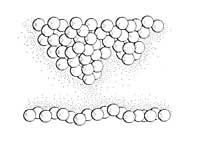
J.R.E.- And you have also worked with a teacher from Madrid. That too theoretical?
T.P.- Yes. I have had very good relations with Flores when analyzing the field of the tunnel microscope. She is an expert in this, working with the Nobel Prize winners, with the papers published with them. The area of ions, for its part, I have worked mainly with Professor Ritchie of Oak Ridge. With Etxenike I have researched both fields and he has contacted me with Ritchie and Flores.
J.R.E.- Will this work continue for the future?
T.P.- I think so.
J.R.E.- In what area?
T.P.- In both areas. At this time I am studying together with Etxenike and Ritchie the non-linear effects of the braking force of charged particles that traverse matter. The braking force at the limit where the disturbance is very small is proportional to the square of the projectile load. Recently, on the contrary, it has been experimentally proven that the braking forces of protons and antiprotons are different, and the interpretation of these results is due to the contribution of a braking force proportional to the projectile load cube.
J.R.E.- Changing the subject, for that thesis you have received the Azkue Prize for research in Basque. It's joy, let's not say. It should be noted, however, that he presented his thesis in Basque and English. Why?
T.P.- All the documentation used and the works published by me, all of them written in English, but I wrote the thesis report only in Basque. To present the thesis at the University I did not have to do translation, once the abstract was made in Spanish. However, only some of them could read the thesis written only in Basque, not even the members of the court, and I decided to translate it. I thought the English translation would be more useful than the Spanish translation, and I decided to translate it into English. Thus, in addition, all those who would be part of the court could read the full text, since they thought to bring an American.
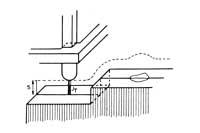
J.R.E.- Along with this, you have worked in the production of texts in Basque. He has published articles and books. Do you plan to continue?
T.P.- Yes, no doubt.
J.R.E.- Do you have any work in your head or for the moment you should take some peace of mind to calm the tension of recent years?
Now I have nothing in mind, but something will certainly be done, because now I am quieter.
Buletina
Bidali zure helbide elektronikoa eta jaso asteroko buletina zure sarrera-ontzian











